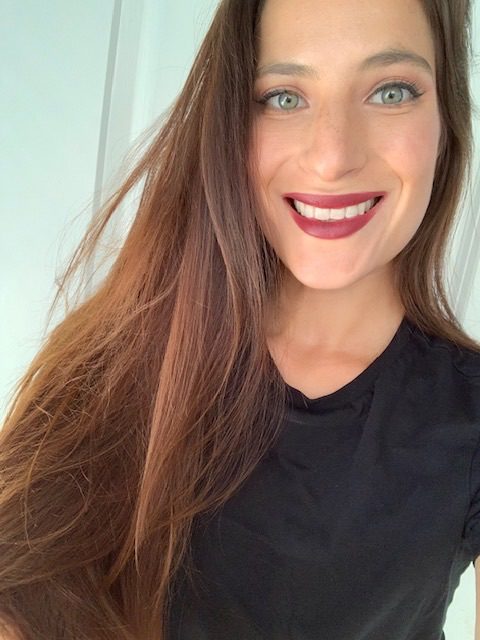
Living with Endometriosis: Sofia Arellano
March 19, 2019

You sit up in the middle of night, it feels like there is a hot barbed wire wrapped around your insides, tearing your flesh. It’s off to the ER again, hopefully for morphine to numb the pounding in your body that feels like you’ve been hit by a train. Likely though, you’re in for a long wait just to be told there is nothing wrong with you. You’ll have an excruciating pelvic exam, at the very least. Or, if you’re lucky, a vaginal ultrasound to make sure you don’t have a burst cyst on your ovaries. You feel judgment as the doctor on duty lectures you about opioid addiction and your ibruprofen use. You call in sick to work for the fourth time that month and hope that you don’t get fired. You need to be able to cover your co-pay and pay off the surgery you had months ago that still hasn’t taken effect. The doctors, your friends, co-workers, and family all are wondering if you’re a hypochondriac.
This is what it is like to have one of the most painful diseases on record–endometriosis.
When I began menstruating at 11, it was so painful that I would miss weeks of school. I was told by doctors I would “learn to live with the pain.” When it didn’t go away, I was told that my pain was due to “depression.” I was prescribed my first antidepressant and anti-anxiety medications before I was 17, and I have been on hormonal birth control since 14.
Doctors told me the best course of action was to continue with hormones, or be put into chemically induced menopause via Depo Lupron. There are stories of Lupron causing tooth loss, hair loss, hot flashes, and loss of bone density years after it should have left a patient’s system. When I found out that this medication was originally given to men with prostate cancer and not designed for endometriosis, I challenged my doctors, “I will take Lupron if you take it with me.” No one ever took me up on my offer.
The truth about endometriosis is that the research is decades behind. There are theories on what can help, however the practice of medical treatment for endometriosis remains grounded in dated procedures and ideologies about the female body and feminine pain. Because the condition affects the reproductive system, it’s coated in stigma and shame. Endo however, is as common as diabetes.
As my endometriosis progressed, I started noticing shooting pain down my back and legs. Sex was painful and my belly would become so swollen that I looked 5 months pregnant. People would ask when I was due, which bothered me, since endo can also cause major issues with becoming and staying pregnant.
The turning point was when I had an endometriosis specialist tell me, “You’re a perfect candidate for surgery, but I can’t help you because you’re endometriosis is not to blame for your pain.” She referred me to a pain psychologist, and sent me on my way in tears. I could not believe this renowned doctor could not comprehend what I knew to be true–that I was very sick. I had been to the ER at least 15 times that year alone, had tried every birth control method on the market, and every painkiller in every dose. I truly felt I would die from the pain.
At 22, when I finally did have surgery, I was afraid that they would open me up and there would be nothing wrong with me. I thought I was a hypochondriac. As fate would have it, I was diagnosed with stage IV endometriosis (the worst kind) in September 2018. My whole pelvic cavity was covered in painful tissue. Some of the scarring was so old it had calcified in an attempt to heal itself. My doctor told me my pain level must have been equivalent to walking on a broken leg for all those years.
Despite all of this, the most painful aspect of this disease has been the gas lighting. I believed I was crazy because instead of doctors admitting they didn’t know the answer to my pain, they instead told me it was all in my mind and that it couldn’t be endometriosis. For example, I was once told by a therapist that the pain I was feeling wasn’t endometriosis, but rather that I had been sexually assaulted, and simply didn’t remember it. That, of course, was not true. I had endometriosis the whole time and my pain was physically and biologically real.
Endometriosis is something I will live and deal with daily. I am dedicated to surviving with this beast of a disease and making sure I can support all the other “endo-warriors” out there. Whether it’s inspiring them to take the stigma out of pain relief for themselves, or urging open communication about pain with loved ones, I’m committed to the cause.
The takeaway? We are not attention/drug seekers. We aren’t projecting our personal traumas into this much physical pain. We don’t need sympathy. We need a cure and more options beyond being sent into menopause at age 22. We need specialists who listen with the intent to learn more about this disease and who don’t judge. We need doctors who can admit when they don’t know something instead of applying a one size fits all model of practice. The most dangerous thing we can do as a society is be complacent. We must embrace change and be willing to be that change that we desperately need.
This story was written by Sofia Arellano, self-described Endo-Warrior.
You can find her on Twitter at @Endo_Goddess_